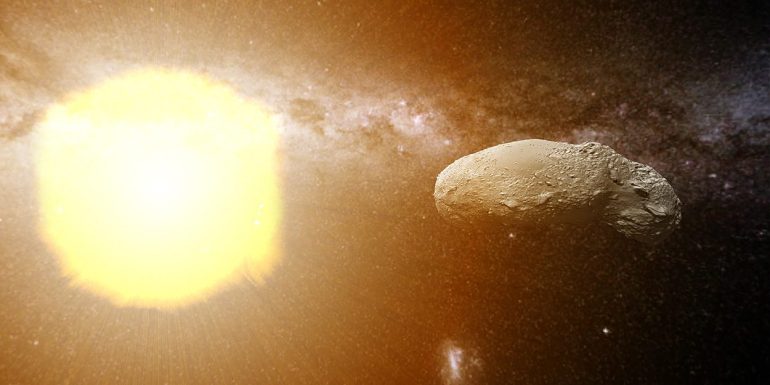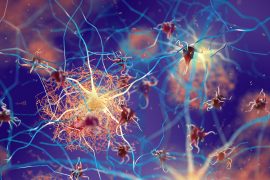More than 70 percent of the surface of our “blue planet” is covered by oceans. But where does water come from? Previous theories held that the earliest time asteroids collided with our planet brought water with them. New analyzes now indicate that the Sun also contributed to the formation of water on Earth. According to this, charged hydrogen particles from solar winds can dissolve oxygen from dust particles in space and thus form water molecules. Then they could reach the young Earth with the dust of space.
The origin of our earthly waters is in space – this has been clear to scientists long ago. But where the water actually comes from has so far remained a mystery, at least in parts. According to the previous theory, it came to Earth in the final stages of Earth’s formation 4.6 billion years ago with so-called types of asteroids, which contain water as well as carbon. But studies show that the composition of water on Earth is slightly different than on C-type asteroids: asteroid waters contain slightly more of the heavy hydrogen isotope deuterium than water on Earth. According to this, some of our water actually comes from Type C asteroids, but there must be some other source.
probe an asteroid
A team led by Luke Daly of the University of Glasgow has now likely identified the source. “Our research shows that the solar wind created water on the surface of tiny dust particles and that this isotopically lighter water probably supplies the rest of the water on Earth,” said co-author Philip Bland from Curtin University in Perth, Australia. it is said. Shortly after the formation of our planet, space dust fell on Earth and brought with it the water in it.
Daly and his colleagues examined samples of a different type of asteroid, called an S-type asteroid, which orbits closer to the Sun than C-type asteroids and consists mainly of the mineral silicate. . The samples were collected by a Japanese spacecraft from the asteroid Itokawa and brought to Earth in 2010. With the help of a technique called atomic probe tomography, the researchers were able to measure the atomic composition of the sample atom by atom and thus track the individual water molecules. “Atomic probe tomography gives us an incredibly detailed look at the first 50 nanometers of the surface of the dust particles on Itokawa. So we can see that this piece of space-experienced rim contains enough water. If you extrapolate that , then the water would be equivalent to about 20 liters per cubic meter of rock.”
how solar winds make water
Daly explains, “Solar winds are streams of hydrogen and helium ions that continuously flow into space from the Sun. When these hydrogen ions collide with an airless surface such as an asteroid or a dust particle in space, they are a few tens of nanometers into the surface.” where they can affect the chemical composition of the rock. Over time, space weathering by hydrogen ions can dissolve enough oxygen atoms from the rock’s material to form water, which is trapped in the asteroid’s minerals. has gone.
An important finding from the researchers is that this water from the solar wind is isotopically lighter than the early Solar System. “This strongly suggests that the fine dust thrown by the solar wind and pulled into the Earth that formed billions of years ago could be the source of the planet’s missing water reserves,” Daly said.
Water source on space mission?
Daly and his colleagues’ results not only give an insight into the early days of our Earth, but may also potentially be important for future space missions. “One of the problems with future human exploration of space is how astronauts can find enough water to survive and do their jobs without having to take it with them on their travels,” said the university co-author. Says author Hope Ishii. Manoa, Hawaii in Honolulu.
“We think it’s reasonable to assume that the same weathering process that produced water on Itokawa also occurred to some extent on many airless worlds such as the Moon or asteroid Vesta. This could mean that space explorers may be able to extract a supply of fresh water directly from the dust on the planet’s surface. It is exciting to think that the processes that have shaped the planets could help support human life beyond Earth.”
Quayle: Luke Daly (University of Glasgow, UK) et al., Nature Astronomy, DOI: 10.1038/s41550-021-01487-W

Web guru. Amateur thinker. Unapologetic problem solver. Zombie expert. Hipster-friendly travel geek. Social mediaholic.





